Children's Hospital
Specialist
In 1862 Drs Eustace Smith and T.C. Kirby established the North West London Free Dispensary for Sick Children at 12 Bell Street, Edgware Road, as a charity for children of the poor. The Dispensary provided medical treatment for any child without notice or recommendation.
The premises at Bell Street soon became too small and, in the early 1880s, £7,000 was raised to buy two houses in Church Street on the northeast corner of Paddington Green. These were converted into a hospital.
The Paddington Green Children's Hospital opened in August 1883. In 1888 an iron hut was built in the grounds to serve as an Out-Patients Department and waiting room.
By 1892 the Hospital had 27 beds for boys up to the age of 12 years and girls up to the age of 14. In 1893 a serious outbreak of diphtheria, the source of which could not be traced, caused the Hospital to close and the main buildings to be demolished. It was then discovered that two old cesspits nearby appeared to be the cause of the outbreak.
The Hospital had moved temporarily to a house a few minutes walk from Harrow station, while plans were made to build a new hospital building on the original site. A convalescent home was established at Paddington Cottage in Wembley (this soon closed as it was in 'unfit condition').
In the meantime plans were made for the new Hospital building, but these had to be modified as the County Council did not allow the line of frontage suggested. A few builders were then selected but the bids were in far excess of the estimated cost of £10,500, so the architects were asked to modify the plans again. The building was made slightly smaller with no porch or other non-essentials. The accepted bid came to about £11,000 and a contract was signed.
Temporary administrative offices for the Hospital opened at 28 Paddington Green. The Out-Patients Department continued to function but had to close for one month to be connected to the new Hospital building. It was not possible for operations to be carried out at Harrow, so patients were treated at other hospitals and then convalesced at Harrow. Patients could spend the whole day out-of-doors and the open air at Harrow alleviated bronchitis, pneumonia, empyema, acute and chronic rheumatism, and tuberculosis and its sequelae. The average stay was for over a month.
The new building was officially opened in 1895 by the Duchess of Teck and was extended the following year.
In 1901 a convalescent home opened at 'Fair View' in Upton Road, Slough, Berks, which could accommodate 16 children in winter and 24 in summer.
By 1904 the Hospital had 46 beds and cots. It was financed mainly by gifts, including £5,000 which had been bequeathed in 1907 by Samuel Lewis. By 1908 the premises of the Out-Patients Department had become inadequate as the number of patients had almost doubled. The Hospital purchased the freehold land for an extension and plans were made for a new building at a cost of £5,000.
In 1911 a much improved Out-Patients Department opened. The building contained a waiting room, consulting rooms, changing rooms, and an operating theatre with an adjacent anaesthetic room and recovery room. A covered way was built for those waiting to go into the Out-Patients Department.
In 1920 the Hospital had 40 beds, with the average length of stay for each patient about 17 to 20 days. In 1926 a Rheumatism Supervisory Centre for patients with rheumatic heart disease opened (it was closed to new cases in 1939 due to the diminution in the number of admissions).
In 1931 a new convalescent home opened in Lightwater, Surrey. In 1933 the Hospital was refurbished internally, and then had 52 beds and cots, and in 1934 the Out-Patients Department was extended.
In 1948 the Hospital joined the NHS and became affiliated with St Mary's Hospital in Praed Street, and came under the administration of St Mary's Group Hospital Management Committee. Its two convalescent homes - 'Clear Springs' and 'Pine Croft' in Lightwater - were included in the Group. In 1949, due to an excess of paediatric beds in the St Mary's Group, the Committee considered converting the Hospital to treat adult patients suffering from skin and throat disorders, but this was resisted. A protest was organised, with a petition signed by 8,000 mothers being sent to the Minister of Health. The Committee changed its mind and the Hospital remained unaltered.
However, by 1974 it had 16 beds. With the NHS reorganisation at that time, it came under the control of the North West (Teaching) District Health Authority, part of the North West London Regional Health Authority. In 1978 plans were being made to close the Hospital once the St Mary's Hospital site had been redeveloped.
In 1982 the boundaries of the District Health Authorities were redrawn and the Hospital became part of the Paddington and North Kensington Health Authority.
It closed in 1987 with 16 beds. Services were transferred to the paediatric unit in the newly built 10-storey Queen Elizabeth The Queen Mother Wing at St Mary's Hospital.
Present status (February 2008)
The former Hospital building is Grade II listed and has been refurbished. It is now Mary Adelaide House, an apartment block. The site also contains a medical centre and a child mental health centre.
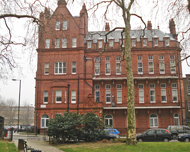
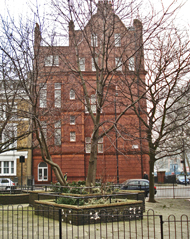
The front of the former Hospital (left) and the northern elevation (right).
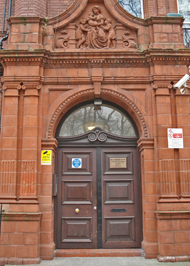
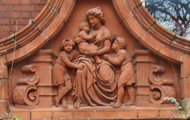
The main entrance (left) with a fine stone carving (right) above the door.

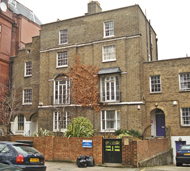
A view of the building as seen from the south (left). The yellow brick extension (right) has become the St Mary's Child and Adolescent Mental Health Service, part of the Central and North West London NHS Foundation Trust.
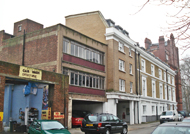
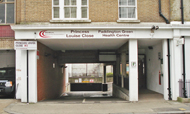
The Medical Centre in Chapel Street (left) with its rather daunting entrance (right).
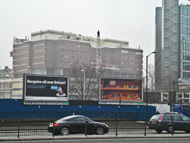
The bulk of St Mary's Hospital was temporarily visible from Paddington Green because of construction works.
Paddington Green Children's Hospital
Two wards of the new Hospital built in 1895 contained pictorial tiled panels made by Doulton and W.B. Simpson & Sons. In 1911 the firm of Craven Dunnill & Co had installed 15 tube-lined pictorial tiles in the new Out-Patients Department. Some were quite large - 6 feet high and 3-4 feet wide.
The Heritage Tile Conservation Company was commissioned to remove and restore and then to relocate the tiled panels to the 60-bedded children's unit in the Queen Elizabeth the Queen Mother Wing at St Mary's Hospital, but because the building was listed Grade II, the panels remain.
Redstone D 1988 The pictures in Paddington Green Children's Hospital. St Mary's Gazette 94, 37-39.
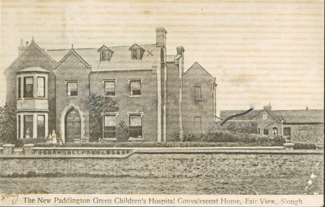
This postcard of Fair View, Paddington Green Children's Convalescent Home, was posted on 18th April 1909. The site of Fair View is now occupied by No. 40 Upton Road, Slough.
(Image courtesy of Mrs Carol Bampton)
(Author unstated) 1949 Paddington Green Hospital saved. British Medical Journal 2 (4639), 1283.
(Author unstated) 1981 Anatomy of a consultation. St Mary's redevelopment: three years later. British Medical Journal (Clin Res Ed) 282, 1811-1813.
(Author unstated) 1981 St Mary's redevelopment: all over bar the shouting? British Medical Journal 1 (6175), 1438-1439.
Harmer M 1949 Paddington Green Children's Hospital. British Medical Journal 2 (4636), 116.
Miller R, Sanderson M 1927 Rheumatism in childhood. A year's work of a supervisory centre. British Medical Journal Supplement 2 (3492), S223-224.
Winnicott DW 1949 Correspondence. Paddington Green Children's Hospital. British Medical Journal 2 (4629), 711-712.
https://en.wikipedia.org
https://historicengland.org.uk
www.aim25.ac.uk
www.british-history.ac.uk
www.flickr.com
www.images-of-london.co.uk
www.london-footprints.ac.uk
www3.westminster.gov.uk
Return to home page